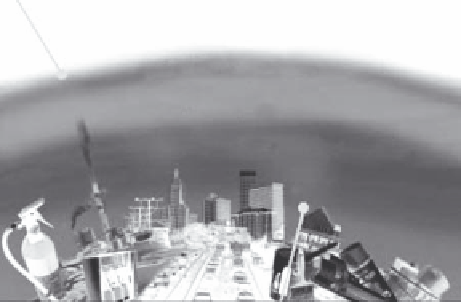Environmental Engineering Reference
In-Depth Information
30 miles
Protective Ozone Layer
Stratosphere
Troposphere
6 miles
Smog
Earth
FIGURE 7.28
Ozone in the atmosphere: Good up high, bad nearby. (From United States Environmental Protection Agency,
Ozone-Good up high bad nearby
.
Office of Air and Radiation, EPA-451/K-03-01, Washington, DC, http://www.
epa.gov/oagps001/gooduphigh/ozone.pdf (accessed July 2, 2010), 2003.)
brought on by free chlorine in the upper atmosphere, HFCs are potent greenhouse gases
and their use should be carefully monitored, and ultimately reduced.
Ground-level ozone is not emitted directly into the air, but is created by chemical reac-
tions between oxides of nitrogen (NO
x
) and VOCs in the presence of sunlight. Emissions
from automobile exhaust, gasoline vapors, chemical solvents, electrical generating facili-
ties, and certain factories are some of the major sources that emit compounds leading to
the generation of ozone (USEPA 2009h). Table 7.16 shows the percent contributions of these
major sources.
Ground-level ozone is a concern in urban regions of the United States. During the sum-
mer, strong sunlight and hot weather produces the conditions necessary for producing
harmful levels of ozone. Overexposure to ground-level ozone can result in difficulty
breathing and other respiratory affects (USEPA 2009h); especially for the elderly, very
young, and those with existing respiratory ailments.
TABLE 7.16
Sources and Contribution of NO
x
and VOCs
Percent
Contribution
Compound
Source
NO
x
Motor vehicles
56
Utilities
22
Industrial, commercial, and
residential fuel consumption
17
Other
5
Total
100
VOCs
Industrial and commercial
processes
50
Motor vehicles
45
Consumer solvents
5
Total
100



Search WWH ::

Custom Search